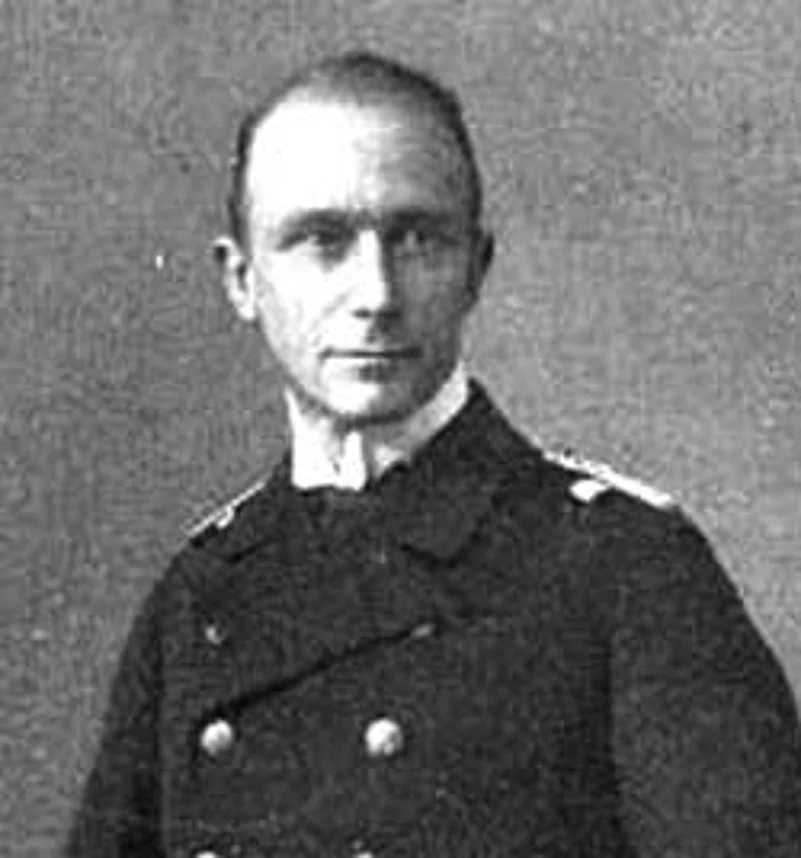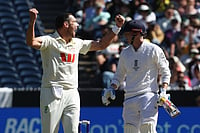Around a million Indians served in World War I, but the flames of the conflagration touched it directly only once: the bombardment of Madras by the German light cruiser SMS Emden, 100 years ago this week. That action, was part of one of the greatest military exploits of the war—the daredevil marauding of the Emden in the South Pacific and Indian Ocean for three months, creating havoc and spreading panic, sinking both merchant and naval ships, shutting down sea traffic, and single—handedly tying down a vaunted British navy in the zenith of its prowess.
Ultimately, on the orders of an irate Winston Churchill (the first lord of the Admiralty), 72 warships from the British, Australian, Russian and Japanese navies were assigned to hunt the Emden down! They cornered it halfway to Australia, and finally sunk it. It is an episode not many remember, although the word ‘Emden’ has entered various languages, including Tamil, Sinhalese and Malayalam, denoting shades of meaning from ‘cunning’ and ‘audacious’ to ‘terrifying’.
The story begins in 1914, when SMS Emden was based in Tsingtao, China, as part of the German Asian fleet. When war was declared, it was decided to withdraw the fleet to Europe, rather than risk being cut off by the powerful Allied navies. But one young captain, Karl von Muller of the Emden, requested permission to stay behind and disrupt Allied shipping in Asian waters. It was a suicidal mission. By early September, the Emden had quietly slipped in to the region’s busiest shipping lanes. Ingeniously disguising itself as the British cruiser HMS Yarmouth, von Muller perfected the art of sneaking up on Allied merchant ships, raiding their cargoes, and sinking them, but making it a point to treat the unfortunate crew with chivalry, and ensure their safety and well-being. The Emden hit headlines around the world, and newspapers talked not just about the ship’s amazing, and intrepid, piratical run, but also about its captain’s gentlemanly conduct. One Hong Kong newspaper, typically, praised von Muller for “behaving not merely with humanity but with consideration towards the British crews”, going on to add that “He is making history because he is doing what hardly anyone thought could be done”.

In just two weeks, the Emden had raided or sunk 11 ships. By mid-September 1914, all voyages between India and Singapore were stopped. Then, late on the night of September 22, 1914, it did something totally unexpected: it sailed unnoticed into Madras, turned its 10 four-inch guns on the port, and opened a furious fusillade. Capt von Muller’s objective was to spread panic and humiliate the English in the eyes of Indians. He first blew up the Burmah Oil Company’s petrol tanks along the seafront and then proceeded to shell Madras for the next 30 minutes, averaging one shell every 15 seconds. It was a calculatedly terrifying experience. The casualties, however, were surprisingly small—five killed and 26 injured, mainly sailors from a ship sunk in the harbour, because the gallant von Muller had scrupulously avoided hitting the city’s civilian areas. The attack achieved its objective: it resulted in public panic, rioting, looting, an exodus from the city, and the calling out of police reserves to maintain order. Meanwhile, popular Tamil songs were composed about the Emden’s exploits, and mothers, for years afterwards, would hush their children with threats that ‘Amadan’ would come and get them.
One of the interesting sidelights of the Emden episode is a legend in the Schomburg family, a well-known family of German origin in the city. It says that earlier that day, von Muller had, undetected, dropped anchor on the coast north of Madras to take on supplies. Hearing from the locals that there was a German family in Madras, he borrowed a horse and, while his ship was being readied, had ridden into town, with characteristic audacity, to say hello to a fellow German, Dr Schomburg (the Schomburgs’ grandfather, who was having lunch at the famous old Pelleti’s restaurant on Mount Road). Dr Schomburg, already under suspicion because of his German origins, was horrified when he learnt of his visitor’s true identity and begged von Muller to go away. Though unverified, the episode remains a fond legend with the Schomburgs, reinforcing von Muller’s image as a cavalier of the seas. Other legends, too, have grown around the Emden, such as the one that the ship’s doctor was an Indian nationalist named Chempakaraman Pillai, and his family ritually commemorates the Emden episode, and his involvement in it, every year. Apocryphal they may be, but these anecdotes indicate the powerful mystique surrounding the German ship.
Madras was the beginning of a new phase in the Emden’s depredations. Over the next few weeks, it spread terror in a swathe from Sri Lanka to Diego Garcia, raiding or sinking another 16 ships. Then one day, it suddenly appeared in Penang harbour in broad daylight, swiftly sank two warships, and melted away. Capt von Muller’s next objective was to destroy a strategic Allied wireless station in the Cocos Islands, near Australia, and thus cut Allied communications in the Indian Ocean. But by now the Emden’s luck had run out. It was sighted by the HMAS Sydney, and in an unequal naval duel lasting 90 minutes, it took over a hundred hits and finally surrendered. Capt von Muller, the ‘knight of the seas’, and his surviving crew were taken prisoners. It was the last mission of its kind in naval history: henceforth such a role would be taken over by the newly introduced submarine.
But the postscript to Emden is almost as interesting. Fifty crew members managed to escape and, led by the second-in-command, Lieutenant von Mucke, they embarked on a six-month journey back home that reads like an Indiana Jones adventure. First they hijacked an antiquated sail-boat, and managed to navigate it to Sumatra. There, having learned that Turkey had just joined the war on Germany’s side, they got a ship to take them to Yemen. From Yemen they journeyed overland across the Arabian desert by camel, encountering various hazards, including a three-day pitched battle with a hostile Bedouin tribe, and dealt with a suspiciously hospitable Arab sheikh, who was trying to hand them over to the British.
Finally they arrived in Istanbul to a heroes’ welcome. The Kaiser himself received them when they reached Berlin. Their epic adventure was commemorated in Berengar Pfahl’s film Die Mannen der Emden (2012). Each crew member was awarded the Iron Cross for gallantry. A special Iron Cross was awarded to the ship itself, an honour probably unprecedented in naval history. Also, each crew member was allowed to hyphenate the name Emden after his surname, another unprecedented honour.
But the greatest honour of all is, perhaps, the way the ship’s name has been absorbed into colloquial Tamil and Malayalam and, a hundred years later, is still sometimes used to refer to somebody who is exceptionally intimidating, daring, crafty or simply giant. A brief encounter bears a lasting imprint.
























